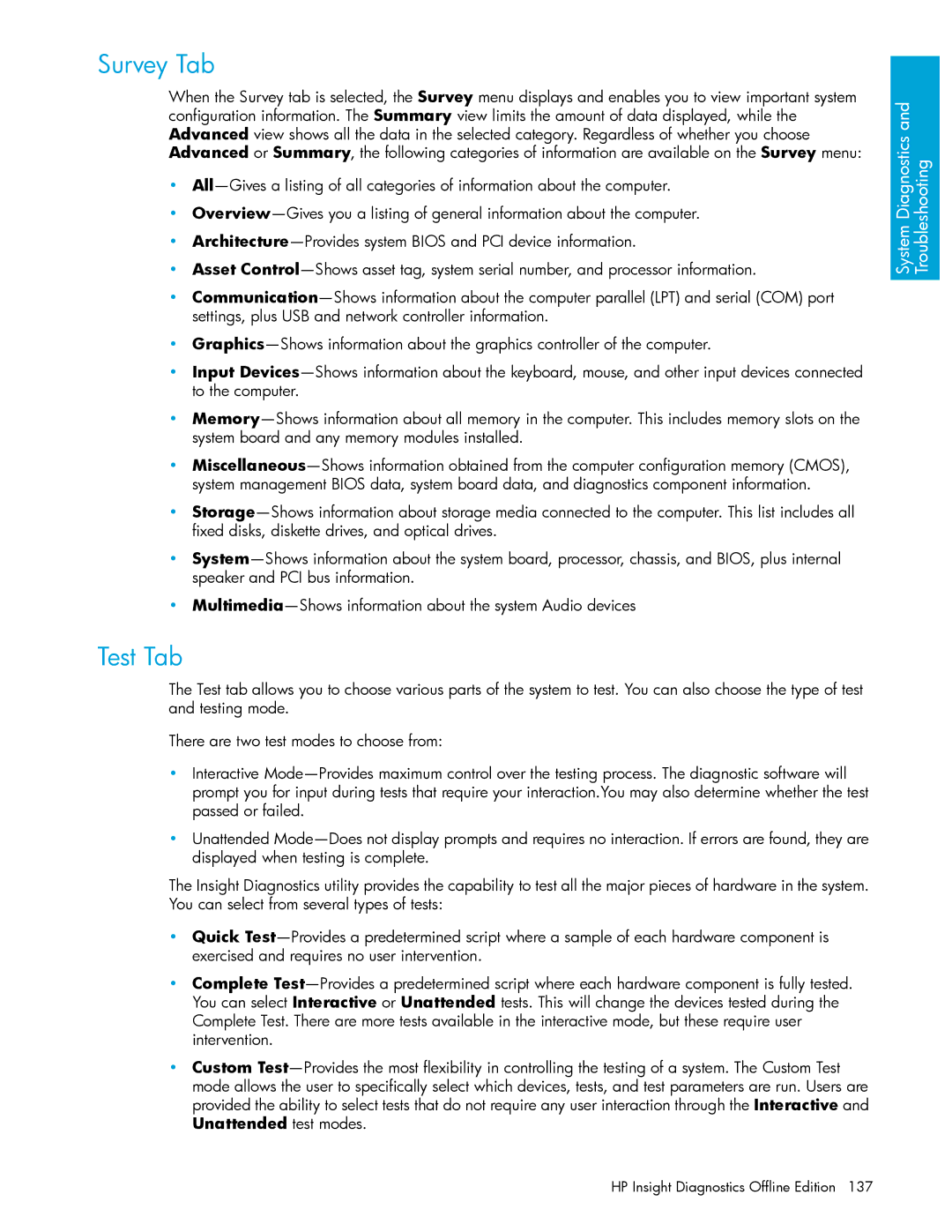Survey Tab
When the Survey tab is selected, the Survey menu displays and enables you to view important system configuration information. The Summary view limits the amount of data displayed, while the Advanced view shows all the data in the selected category. Regardless of whether you choose Advanced or Summary, the following categories of information are available on the Survey menu:
•All—Gives a listing of all categories of information about the computer.
•Overview—Gives you a listing of general information about the computer.
•Architecture—Provides system BIOS and PCI device information.
•Asset Control—Shows asset tag, system serial number, and processor information.
•Communication—Shows information about the computer parallel (LPT) and serial (COM) port settings, plus USB and network controller information.
•Graphics—Shows information about the graphics controller of the computer.
•Input Devices—Shows information about the keyboard, mouse, and other input devices connected to the computer.
•Memory—Shows information about all memory in the computer. This includes memory slots on the system board and any memory modules installed.
•Miscellaneous—Shows information obtained from the computer configuration memory (CMOS), system management BIOS data, system board data, and diagnostics component information.
•Storage—Shows information about storage media connected to the computer. This list includes all fixed disks, diskette drives, and optical drives.
•System—Shows information about the system board, processor, chassis, and BIOS, plus internal speaker and PCI bus information.
•Multimedia—Shows information about the system Audio devices
Test Tab
The Test tab allows you to choose various parts of the system to test. You can also choose the type of test and testing mode.
There are two test modes to choose from:
•Interactive Mode—Provides maximum control over the testing process. The diagnostic software will prompt you for input during tests that require your interaction.You may also determine whether the test passed or failed.
•Unattended Mode—Does not display prompts and requires no interaction. If errors are found, they are displayed when testing is complete.
The Insight Diagnostics utility provides the capability to test all the major pieces of hardware in the system. You can select from several types of tests:
•Quick Test—Provides a predetermined script where a sample of each hardware component is exercised and requires no user intervention.
•Complete Test—Provides a predetermined script where each hardware component is fully tested. You can select Interactive or Unattended tests. This will change the devices tested during the Complete Test. There are more tests available in the interactive mode, but these require user intervention.
•Custom Test—Provides the most flexibility in controlling the testing of a system. The Custom Test mode allows the user to specifically select which devices, tests, and test parameters are run. Users are provided the ability to select tests that do not require any user interaction through the Interactive and Unattended test modes.
